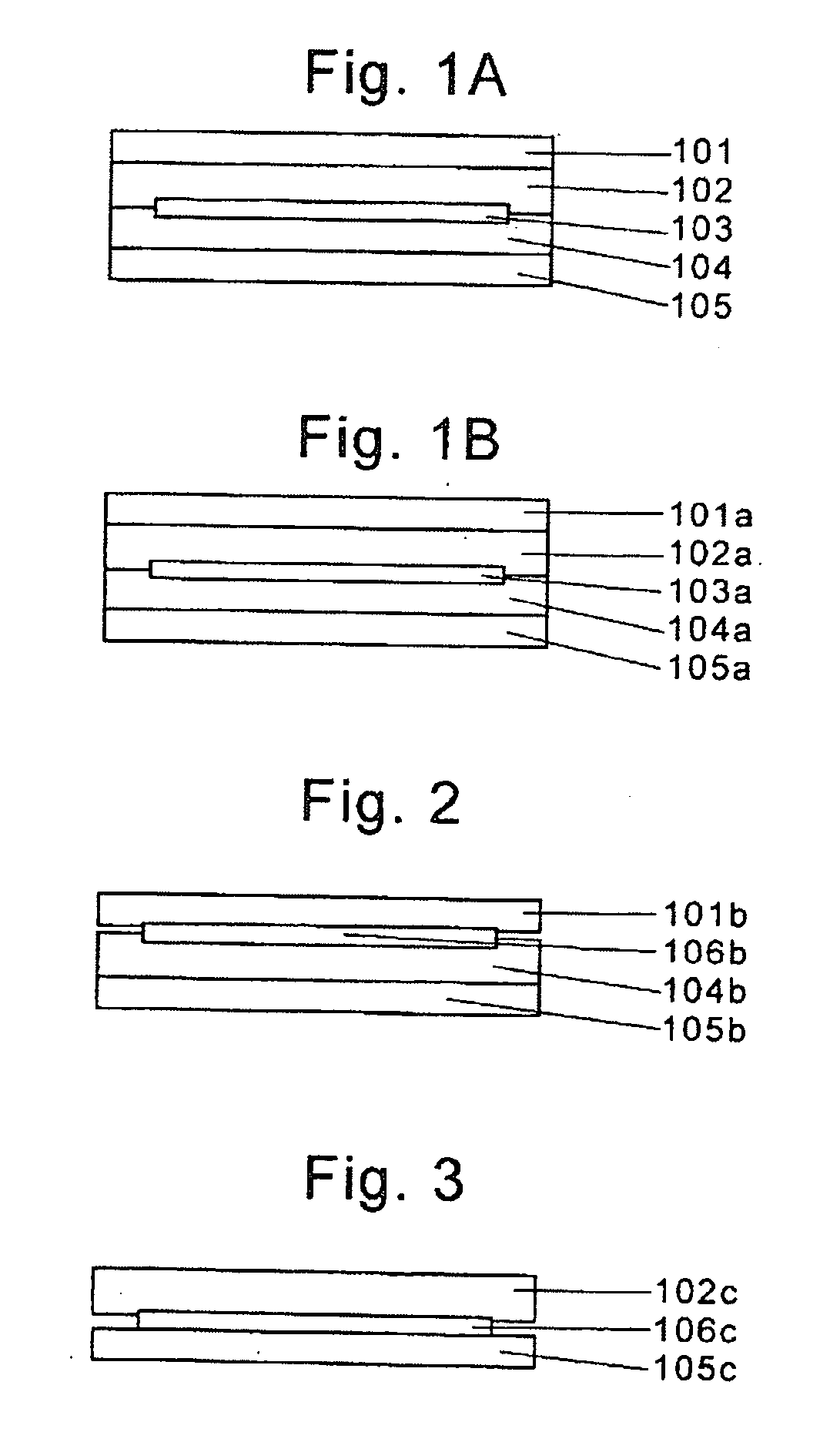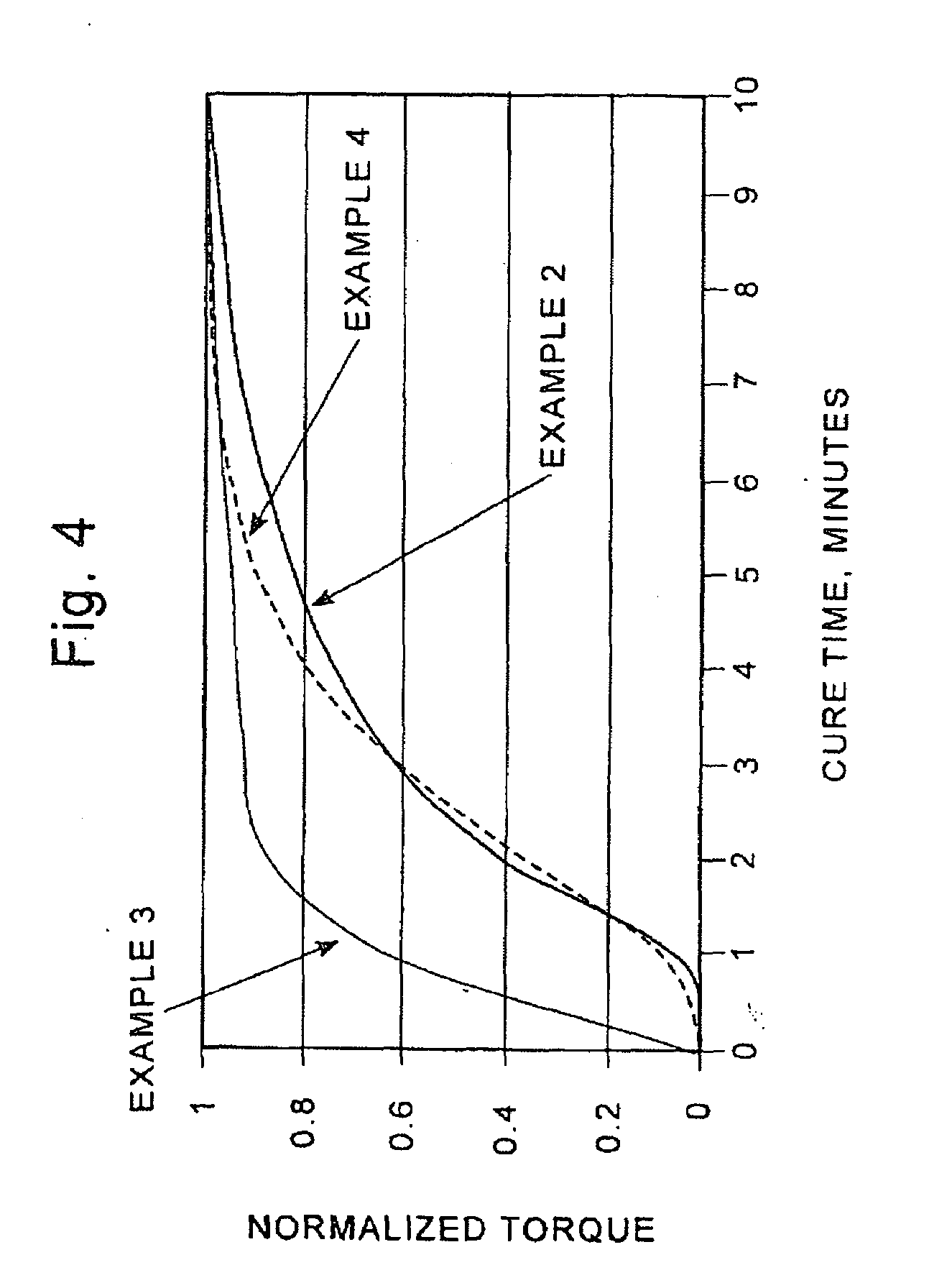Encapsulation of Photovoltaic Cells
- Summary
- Abstract
- Description
- Claims
- Application Information
AI Technical Summary
Benefits of technology
Problems solved by technology
Method used
Image
Examples
example 1
Preparation of a Resin / Polymer Blend
[0157]A trimethyl terminated poly dimethyl, methyl vinyl siloxane gum having a plasticity of 58 mils as measured by ASTM 926 was blended with a solution of 30% by weight vinyl functional MQ resin in xylene in a ZSK dual lobed twin screw extruder using the following process:—The M:Q resin had an M:Q ratio of approximately 0.75, a vinyl content of approximately 1.8 wt % and number average molecular weight of 6000 g / mole. The trimethyl terminated poly dimethyl, methyl vinyl siloxane gum was fed into the extruder using a single screw feeder and the resin solution was introduced using a positive displacement feed pump, initial mixing took place at a temperature of approximately 150° C. and after a period of 1 minute the temperature was increased to 180° C. to complete the mixing process and in order to strip out the xylene. Three vacuum stripping zones, each at a pressure of 29″ Hg (98.2 kNm−2) were utilized to achieve solvent removal of greater than 9...
example 2
Addition of Catalyst to the Resin Gum Blend
[0159]To introduce a catalyst package into the product of example 1 above, 95.5% by weight of the product of Example 1 was mixed with 3% by weight of 1,1-bis(tert-butylperoxy)3,3,5-trimethylcyclohexane and 1% by weight of a vinyl functional cross linker in the form of a linear polydimethylsiloxane with degree of polymerization 100 and vinyl content of 0.05% by weight and 0.5% of an acrylylpropyltrimethoxy silane functional adhesion promoter in a Haake mixer equipped with sigma blades and preheated to 110° C. The resulting product was pressed into a sheet using a platen press under a force of 300 kN to give a clear film of about 25 mil (0.635 mm) thickness. Silicone coated polyester was used as a release liner to prevent adhesion of the product to the press.
example 3
[0160]In Example 3 93.4% by weight of gum / resin blended pellets prepared as described in Example 1, was introduced into a Haake mixer equipped with sigma blades and preheated to 110° C. To this was added 6.13% by weight methyl hydrogen cyclic siloxane with average ring size of 4.5 repeat units. Subsequent to mixing, at approximately 110° C. the resulting mixture was allowed to cool to 70° C. whilst mixing was continued. Finally 0.28% by weight diallyl maleate catalyst inhibitor and a homogenous Pt complex 0.19 by weight was introduced into the mixture. The resulting homogenous mixture was pressed between 2 sheets of fluoro-coated PET to a thickness of 15 mils (0.381 mm), and cured under glass in a laminator within 7 minutes at a 150° C. set temperature.
PUM
| Property | Measurement | Unit |
|---|---|---|
| Temperature | aaaaa | aaaaa |
| Size | aaaaa | aaaaa |
| Flexibility | aaaaa | aaaaa |
Abstract
Description
Claims
Application Information
 Login to View More
Login to View More - R&D
- Intellectual Property
- Life Sciences
- Materials
- Tech Scout
- Unparalleled Data Quality
- Higher Quality Content
- 60% Fewer Hallucinations
Browse by: Latest US Patents, China's latest patents, Technical Efficacy Thesaurus, Application Domain, Technology Topic, Popular Technical Reports.
© 2025 PatSnap. All rights reserved.Legal|Privacy policy|Modern Slavery Act Transparency Statement|Sitemap|About US| Contact US: help@patsnap.com



